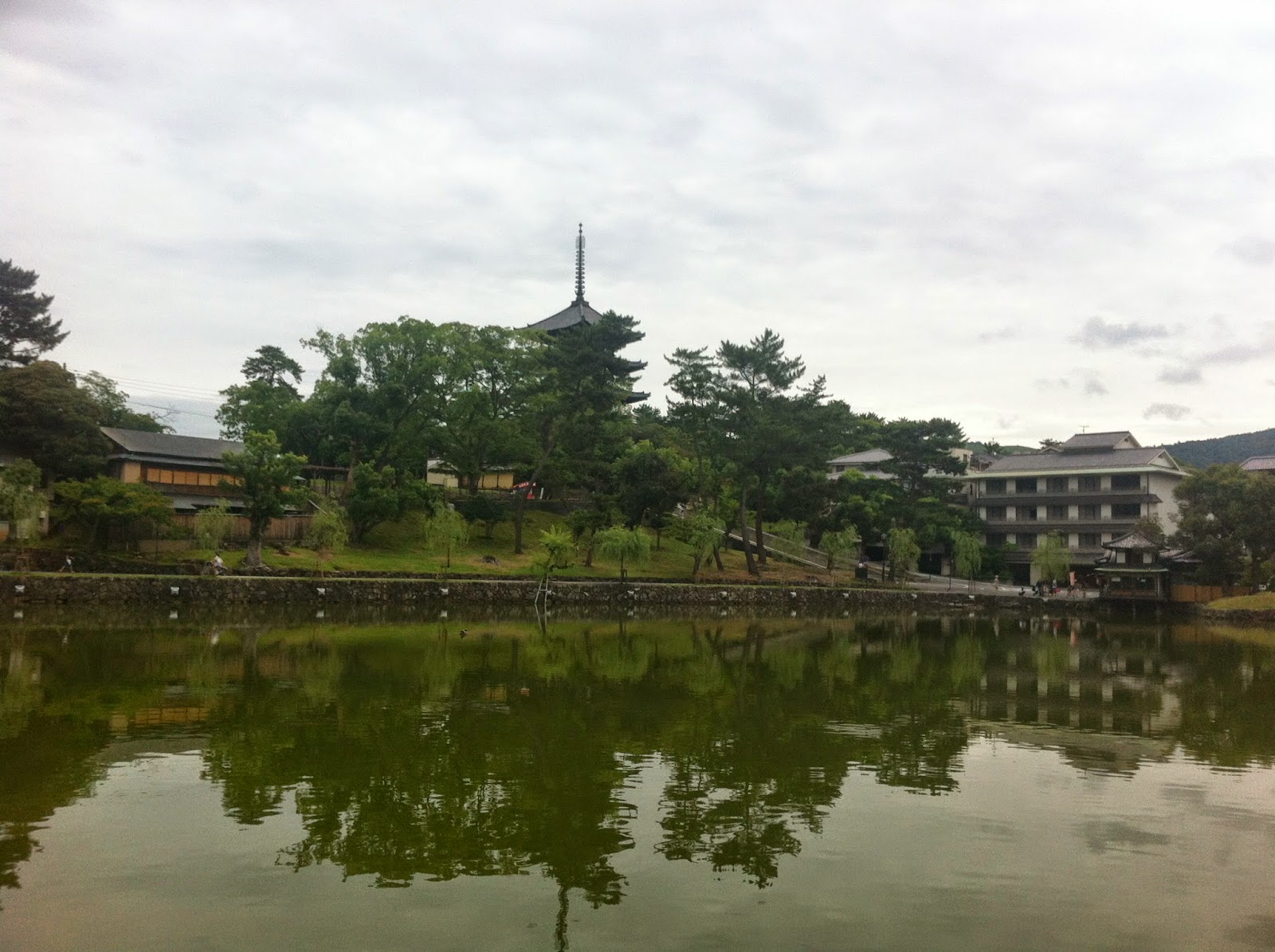Once there, I almost immediately ran into Tetsuo-san, an older man who worked as a volunteer guide. He offered to guide me through Nara.
First view of Nara
Our first stop was the old temple Tofuku-ji. Nara was capital of Japan in 710-94, and most sites are originally from that time span, though the individual buildings are younger. Tofuku-ji had, among other things, two pagodas, one considered "feminine" and "graceful", the other "masculine" and "powerful".
Later on, we visited the Todai-ji, home of Japan's greatest Buddha statue:
The temples both sported a few interesting features. One was symbols of Chinese lions, thought to be imports from Persian culture:
These symbols signify the extensive trade networks that existed during the 8th century. Tetsuo-san explained that Nara culture is very obviously influenced by Tang dynasty China and countries beyond: once the capital was moved to Kyoto, the Japanese of the Heian era forged their own versions of Buddhism.
The other feature were the sacred deer of Nara. I let the pictures speak for themselves:
We finished the day by some sake-testing.








Inga kommentarer:
Skicka en kommentar